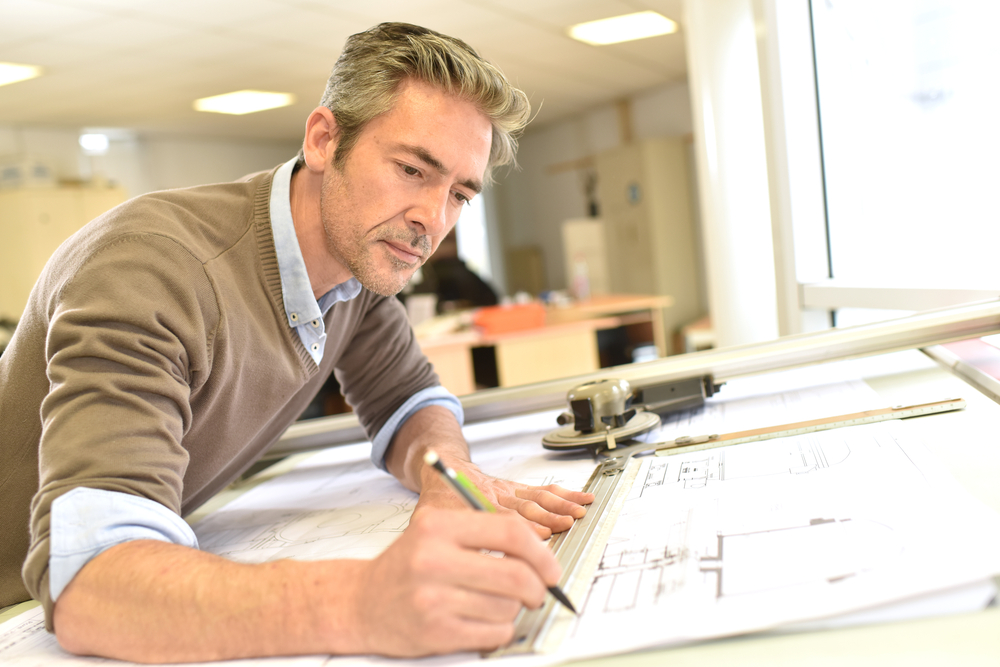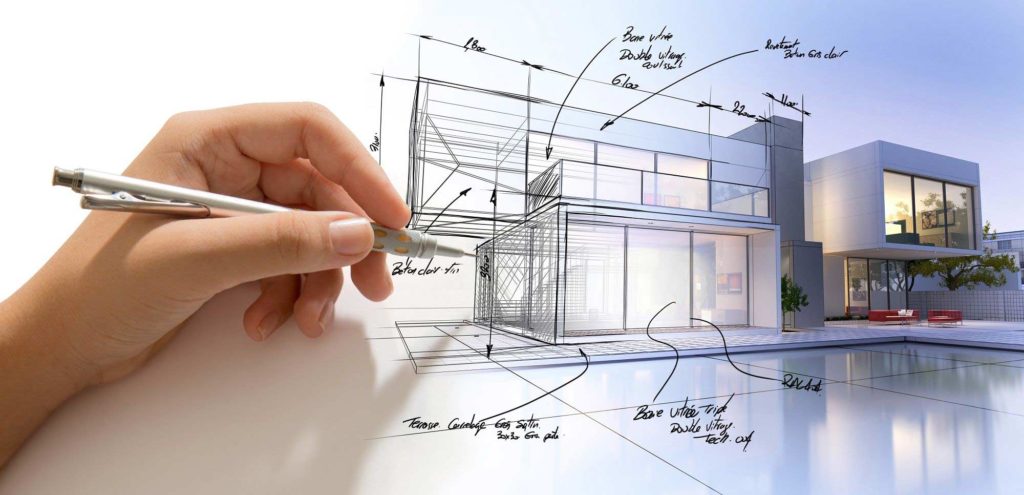Architect Insights on Combining Form and Function
Architect Insights on Combining Form and Function
Blog Article
Comprehending the Diverse Occupation Paths Available for Aspiring Architect
As an ambitious Architect, you have a world of job courses waiting for you. Whether you're attracted to typical architecture or the nuances of lasting layout, there's a specific niche that aligns with your rate of interests.
Conventional Design: Creating Frameworks and structures
Standard architecture focuses on developing buildings and frameworks that blend functionality with aesthetic allure. As you explore this field, you'll value the intricate balance in between type and purpose. You'll learn to draw motivation from historical designs, integrating aspects like balance, materials, and workmanship. Your styles can show social heritage, showcasing local traditions while meeting modern-day requirements.
You'll develop skills in preparing, model-making, and site evaluation, allowing you to envision and communicate your concepts successfully. Involving with customers, you'll require to comprehend their vision and equate it right into possible styles.
Moreover, building codes and sustainability techniques are important in your job, ensuring your frameworks are risk-free and eco pleasant. As you grow in your career, you'll discover opportunities in domestic, business, or perhaps repair jobs, each offering unique obstacles. Embracing typical design leads the means for a fulfilling career that admires the past while forming the future.
Urban Preparation: Shaping Communities and Public Spaces
As a hopeful Architect, you can play a necessary duty as an urban coordinator, transforming just how neighborhoods interact and function. By employing community interaction techniques, you'll guarantee that homeowners have a voice in shaping their environment. Plus, integrating lasting style concepts will aid produce areas that not just fulfill today's needs yet additionally protect the future.
Function of Urban Planners
While lots of could believe of engineers as the single enthusiasts behind buildings, city coordinators play a crucial function in shaping the wider landscape of communities and public spaces. By working together with different stakeholders, you'll assist develop parks, transportation systems, and domestic areas that promote social interaction and ease of access. Your know-how in spatial style and area characteristics permits you to imagine future growth while preserving cultural heritage.
Area Involvement Methods
Efficient neighborhood engagement strategies are essential for city coordinators to guarantee that the voices of residents are listened to and valued in the planning process. To cultivate purposeful dialogue, you should focus on open online forums and workshops where community participants can reveal their ideas and worries. Use studies and social networks to reach a more comprehensive audience, ensuring varied perspectives are consisted of. Collaborating with local companies can enhance trust fund and assist in deeper links. It's important to provide clear info about suggested projects and decision-making procedures, allowing locals to feel educated and equipped. By actively incorporating and paying attention comments, you'll produce rooms that reflect the area's needs, inevitably causing even more lasting and successful metropolitan settings. Embrace transparency and continual dialogue for enduring influence.
Lasting Layout Concepts
When designing city areas, integrating sustainable style concepts is essential for producing settings that grow both environmentally and socially. Think about incorporating environment-friendly rooms, like gardens and parks, to enhance biodiversity and enhance air top quality.
Creating with water preservation in mind is additionally crucial-- think of rainfall gardens and permeable surfaces to manage stormwater. Entailing neighborhood participants throughout the planning procedure guarantees that the spaces you create meet their demands and encourage social interaction. By welcoming these concepts, you'll add to dynamic, sustainable urban landscapes that profit everyone.

Landscape Style: Producing Lasting Outdoor Environments
As you explore landscape design, you'll find essential layout concepts that develop functional and attractive outside rooms. Sustainable techniques play a vital function in ensuring these atmospheres flourish while decreasing environmental effect. Plus, you'll discover a variety of career possibilities that allow you to make a genuine distinction in exactly how individuals interact with nature.
Style Principles in Landscape
Comprehending layout concepts in landscape architecture is essential for producing sustainable outside atmospheres that integrate with nature. You'll need to consider aspects like percentage, balance, and scale to guarantee your designs feel natural and welcoming. Additionally, pay attention to seasonal changes, designing with materials that complement the environments year-round.
Sustainable Practices Overview
Lasting techniques in landscape style not just concentrate on visual appeals but also focus on eco-friendly health and wellness and source preservation. By integrating native plants, you enhance biodiversity and reduce the requirement for chemical fertilizers and pesticides. Implementing reliable watering systems assists conserve water and minimizes drainage, securing close-by communities. You can design spaces that advertise soil wellness, such as practicing and utilizing natural products permaculture concepts. Additionally, including environment-friendly facilities, like rainfall yards and porous sidewalks, aids in stormwater monitoring and lowers city warm. You add to a healthier earth and offer rooms that foster area link when you create outside environments with sustainability in mind. Eventually, these practices assure your designs profit both individuals and the article source environment for several years to find.
Job Opportunities Exploration
With a strong foundation in sustainable techniques, landscape style offers a range of occupation paths that permit you his response to make a meaningful influence on the setting. You might work as a landscape developer, developing aesthetically pleasing and functional exterior rooms, or specialize in ecological repair, helping to restore damaged communities. Urban planners frequently team up with landscape architects to create eco-friendly areas in metropolitan settings, improving city livability. If you're passionate regarding education and learning, take into consideration coming to be a landscape style teacher, inspiring future generations. Additionally, you might collaborate with nonprofits focused on ecological sustainability or take part in research to innovate brand-new techniques. Each path not only forms stunning atmospheres but additionally cultivates a much healthier planet for future generations.
Sustainable Style: Concentrating On Eco-Friendly Practices
As you discover your profession in style, welcoming green methods can establish you apart in an affordable area. Lasting style concentrates on producing buildings that lessen ecological effect while improving passenger health. By including renewable products, energy-efficient systems, and sustainable structure techniques, you'll add to a greener future.
Beginning by acquiring expertise of eco-friendly certifications like LEED or BREEAM, which can boost your credentials. Think about how all-natural light, air flow, and thermal efficiency can maximize design. Team up with engineers and ecological consultants to innovate options that reduce waste and save sources.
Don't fail to remember the relevance of community involvement-- interesting neighborhood stakeholders can inspire styles that integrate with the environment. As clients progressively focus on sustainability, your experience in environment-friendly techniques will certainly not just draw in projects but additionally fulfill your passion for liable design. Embrace this essential element of the career, and watch your career thrive.
Historic Preservation: Protecting and Restoring Social Heritage
While you begin on your architectural trip, consider the crucial function of historic conservation in maintaining our social heritage. This field concentrates on the security and restoration of considerable buildings, sites, and structures that tell the stories of our past. By participating in historic conservation, you'll aid guard the building tradition that shapes community identity.
As a historical conservation Architect, you'll analyze historic relevance and examine the condition of structures. You'll function carefully with conservationists and chroniclers to ensure authentic restoration strategies are used. This job course allows you to blend creativity with research, enabling you to design solutions that respect original products and craftsmanship.
Your job not only adds to sustainability by reusing existing structures but additionally fosters a feeling of pride within areas. Accepting this course will aid you end up being a guardian of background, protecting the tales and aesthetics that improve our lives.
Interior Style: Enhancing Indoor Spaces
Historic preservation and indoor architecture both share a dedication to boosting the built atmosphere, yet they concentrate on various facets. While historic conservation this stresses maintaining a structure's historical and social value, interior style zeroes in on maximizing interior spaces for capability and aesthetic appeals.
As an aspiring Architect, you'll discover that indoor architecture allows you to blend creative thinking with technological skills. You'll create rooms that not just look good but likewise advertise convenience and performance. This field includes comprehending just how light, shade, and products interact within a space, impacting state of mind and use.
You'll deal with various projects, from domestic homes to business offices, guaranteeing that each atmosphere satisfies the requirements of its owners. By focusing on customer experience, you can change insides right into useful and motivating rooms, making a significant impact on how people interact with their surroundings. Welcome the possibility to boost interior atmospheres and form the method people live and work.
Industrial Style: Merging Performance With Looks
Commercial style plays a necessary function in producing products that seamlessly mix aesthetics with functionality, ensuring that what you use day-to-day is not just aesthetically attractive yet additionally practical. As an aspiring Architect, you can immerse yourself in this area, concentrating on creating whatever from furnishings to consumer electronic devices. Your job includes comprehending customer requirements, materials, and making procedures, enabling you to create cutting-edge services that enhance day-to-day experiences.
In commercial layout, you'll frequently work together with producers, marketing professionals, and engineers, making sure that your styles are not just lovely yet likewise practical. This occupation course provides a dynamic environment where creativity meets usefulness, making it a fulfilling selection for engineers interested in forming the products of tomorrow.
Regularly Asked Inquiries
What Educational Certifications Do I Required to End Up Being an Architect?
To become an engineer, you'll require an expert degree in style, commonly a Bachelor's or Master's. Furthermore, you'll have to complete a teaching fellowship and pass the Architect Registration Examination to exercise lawfully.
Are There Qualification Demands for Different Building Occupation Paths?
Yes, there're accreditation requirements for numerous architectural courses. Architect. You'll require to pass exams, full internships, and sometimes seek specialized training, depending upon your picked focus, like landscape architecture, metropolitan design, or historical preservation
What Software Abilities Are Important for Engineers Today?

Just How Can I Gain Practical Experience While Examining Architecture?
You can gain practical experience by interning at building firms, taking part in layout competitors, volunteering for area jobs, or working together with classmates on real-world tasks. These chances enhance your abilities and build beneficial links in the industry.
What Work Opportunities Exist Outside Traditional Style Firms?
You can explore numerous work chances outside traditional design companies, like metropolitan preparation, interior decoration, landscape design, building monitoring, realty growth, and even functions in sustainability consulting. Each deals distinct obstacles and rewards.
Whether you're attracted to traditional design or the subtleties of sustainable style, there's a niche that lines up with your passions.When developing metropolitan rooms, incorporating lasting layout principles is vital for creating atmospheres that prosper both environmentally and socially.As you explore landscape design, you'll uncover important layout concepts that create attractive and functional outside rooms.Understanding style concepts in landscape style is important for developing sustainable outside settings that harmonize with nature.In commercial layout, you'll usually team up with suppliers, marketing experts, and designers, ensuring that your designs are not only stunning however likewise practical.
Report this page